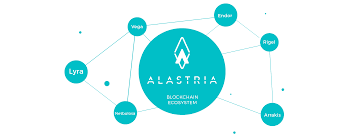Developing blockchain solutions in a legal framework

A few months ago we told you what is and how blockchain technology works.
We also told you about the importance of continuing our Research and Development, specifically within the framework of Docuten, for the implementation of distributed solutions based on this type of technology.
Since then we have advanced in the study of prototypes of diverse nature, from distributed notary services, digital identity and transnational operations to the implementation of sectoral networks.
The focus of our R&D line is fundamentally on decentralizing business solutions in the field of electronic signature , replacing the figure of the trusted third party with the use of distributed and publicly auditable implementations.
In order to move forward and dispel possible doubts about the legal validity of these solutions, it is necessary to walk hand in hand with other companies and groups, keeping our team updated with the technical and legal advances in the blockchain field.
The regulation of blockchain technologies
Technological development always precedes regulation from states.
In the case of Bitcoin, designed to operate globally away from national institutions, the structural inability on the part of nation states to exercise control over the network soon turned it into a supra-legal entity, a direct threat to traditional organisms with a centralized topology.
This fact has hampered the adoption of technologies distributed by some sectors for years, while the bad press associated to cryptocurrency made any attempt to regulate their use in specific contexts difficult.
Talking about regulation in the field of blockchain networks is an oxymoron, considering these technologies were designed from their base as autonomous and supra-national entities, with a resilient and fault tolerant character. This does not imply, however, that the advantages of the blockchain are outside the business sphere and that the civil society cannot benefit from them for a specific purpose and in a limited legal framework.
Fortunately, the potential of decentralization and the disruptive contribution of the DLTs (Distributed Ledger Technologies) has aroused a multisectoral interest that takes us towards a new legal horizon, a near future where the regulation of blockchain-based solutions can soon be a reality.

Our commitment to innovation requires us to stay ahead of the regulations and work in parallel. Since the beginning of blockchain technology, our team has closely followed the development of the new standards and now, more than ever, we want to bet on a P2P model that has its place in Docuten.
It seems obvious that in the near future technologies derived both conceptually and directly (by means of forks like Quorum) from Ethereum will soon be recognized within certain legal frameworks. For the case that concerns us, with regard to electronic signature and digital identity, this is good news.
With the incorporation of a distributed ecosystem operating under a national or European legal framework, signature operations would gradually tend to substitute traditional solutions such as time stamps, qualified certificates and certification entities for the use of key pairs, or new digital identity standards, operating in DLT networks.
In Enxendra we do not see this as a threat but as an opportunity. An opportunity to embrace innovation and walk towards the disintermediation of our clients operations, simplifying processes, and approaching a P2P model.
Network building: the role of Alastria
The emergence of consortiums like Alastria, from where different public and private entities can build together a common infrastructure, is undoubtedly of special relevance within the European framework in which we operate.

Alastria was born as the first national multi-sectoral platform from which to implement distributed registry applications in accordance with the legal framework.
One of the most attractive points of Alastria is its commitment to offer standards of sovereign identity with legal validity (SSI) that gather under the umbrella of the network the inherent, accumulated and designated attributes of individuals, legal entities and assets.
This multisectorial consortium will allow Blockchain / DLT solutions to be legally effective in the Spanish arena, of course complying with European regulations. In addition, the Alastria Network allows the reduction of costs associated with transactions, with greater efficiency than public networks such as Ethereum (by using different consensus algorithms) and the elimination of the volatility of other networks linked to cryptocurrency.
This network does not intend to compete with public blockchain networks with a transnational and supra-legal character. They pursue different objectives, and we still may use them for specific projects, but the advantage we see in the Alastria Network is the emergence of standards with validity in a specific national context, facilitating its members the implementation of distributed solutions while complying with current legislation.
Developing our solutions within a common framework will allow us to offer our clients a standardized model, walking hand in hand with other companies and organizations from an innovation hub that will help us to continue creating synergies and building a more distributed and efficient future.
